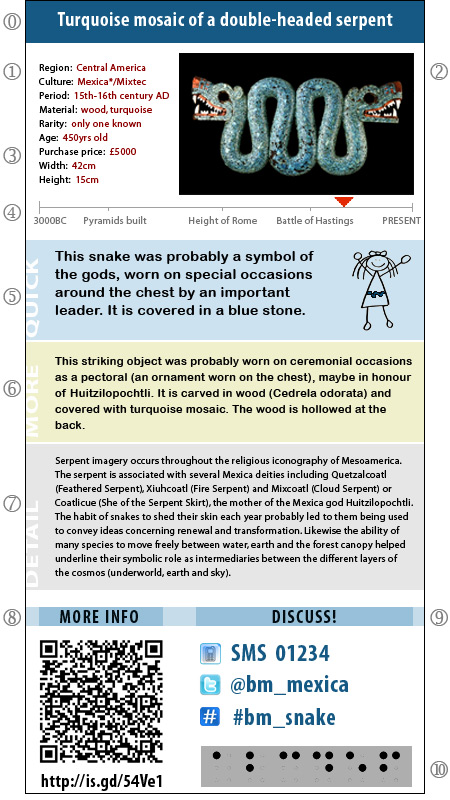I’ve just returned from two weeks’ holiday in the south-west of mainland Britain (Devon, Cornwall and the Forest of Dean area), and as well as being a good chance to clear brain and reflect on the last year, the monsoon-like rain we’ve been having was a good excuse to find indoor entertainment for adults and young kids (7 and 2) alike.
As we variously scampered or trudged around various exhibits, I found myself thinking about games, interaction, and good old engagement. So here are a few musings and observations on a handful of attractions and their approaches to entertaining young and old alike:
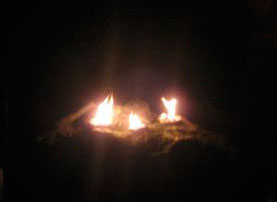
When the lights went out: neolithic lighting
Kent’s Cavern, Torquay, Devon: http://www.kents-cavern.co.uk/
The guide’s informative and lighthearted banter, developing narrative, and use of simple effects like killing the lights; using a lighter to light moss-filled neolithic shell lamps (sight, smell, atmosphere); simple props (skulls, bones), all contributed to a fascinating and constantly thrilling experience for young and old. The keys here: narrative, surprise, variety, atmosphere.
Eden Project, St. Austell, Cornwall: http://www.edenproject.com/
Visually and ethically very impressive, this is actually very linear and non-interactive: I got interest from the numerous exotic plants and some of the information boards, but much of the info is too long/dull, and the occasional dioramas are static. The kids there basically got enjoyment from running around, and parents spent time chasing and telling them off. There are kids’ activity books, but they are too wordy for reading as you go around, and although there are stations where the book can be stamped which my 7 year old liked, they follow the linear path and provide long wordy information sheets which the kids ignore.
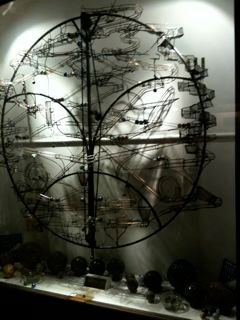
A marble run at the House of Marbles
The House of Marbles, Bovey Tracey, Devon: http://www.houseofmarbles.com/
Consists of very small traditional museum with interesting (to me) behind-glass displays of board and tabletop games through the ages; four marble runs which extend interest for young and old alike with multiple outcomes each time; but best of all was an outdoor courtyard area, with a number of large traditional games (skittles, chess) and some marble-specific ones: adults and kids alike had great fun with these. In summary, it works due to a good mix of static/variable and interactive elements.
Living Coast, Torquay, Devon: http://www.livingcoasts.org.uk/
Similar in many ways to the Sea Life Centres; but differs in that the penguins waddle amongst you, most of the wildlife is very close if not open to you, and the indoor activity area is superb – giant sand pit, climbing wall (a sea cliff) for kids and adults, some very well designed penguin-themed touch-screen games, an excellent floor-projection game which involved running around jumping on objects, and team games across light tables. Superb and very educational.
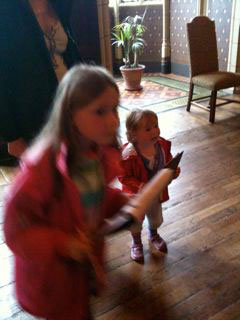
On the hunt for fauna in Cardiff Castle
Cardiff Castle, Cardiff, South Wales: http://www.cardiffcastle.com/
This is an impressive complex. Various stages of use and occupation on the site give a slice through history (Roman walls, Norman keep, Victorian neo-classical tower and stately home). Much is run-of-the-mill modern museum fayre (an ‘audio-visual’ film; a audio-visual commentary to carry around which has long, adult-oriented and rather dull descriptions) but two things excited the kids: climbing the Norman keep and looking out of the arrow slits (always good!), and the worksheets for the Victorian house: one intended for younger children asked them to find animals in each room: some were in carvings in the doorways, some in tapestries, some in the architecture: all adding up to a great treasure hunt which we all took part in. A sheet for older kids, full of long descriptions and little in the way of ‘activity’, was not so good.
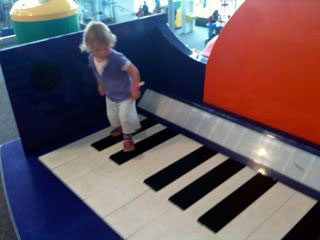
TechniQuest: engagement in black and white
TechiQuest, Cardiff, South Wales: http://www.techniquest.org/
A science park, with two floors packed to the brim with hands-on experiments. This was incredible. The activities appealed to all ages – plenty for parents to get involved in too – very few were out of action, and all induced learning through play in a completely invisible way. Highlights: things to take away (eg spirograph pictures), music to compose (including a giant floor piano for the 2-year old), water fun (racing boats, spraying targets), communal interaction (sound waves across the room, comparing yourself to other visitors on that day etc.). 100% engagement; but then of course this is a self-created attraction, not applying visitor interaction to an existing site.
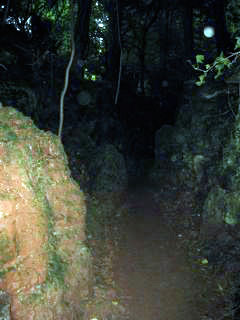
Puzzlewood: Tolkein's inspiration for Mirkwood?
PuzzleWood, Forest of Dean: http://www.puzzlewood.net/
This small, family run site consists of two excellent elements: one almost entirely natural – the puzzle wood (spooky natural mossy woodland augmented with the remains of Roman open mining, and wooden bridges and lookout points) – and the other man-made: an indoor maze with secret doors, tunnels, bridges and a hunt for seven animal symbols. All of us – 2 to 36 – loved both, and yes, I did get hopelessly lost…
And that concludes my little holiday report, with an eye to engagement and visitor interaction. There are quite a few things I’ll be bearing in mind in my own work, and many which reinforce the already-known benefits of keeping things varied, in context, and interesting on many levels.


